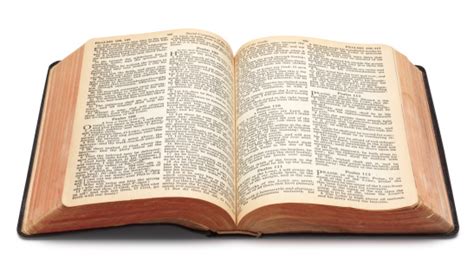jeremiah1five
BIBLICAL CHRISTIANITY
- Joined
- Jun 4, 2023
- Messages
- 2,254
- Reaction score
- 232
- Points
- 63
- Country
- USA
Taking the year most accepted in Christendom of A.D. 30 for the crucifixion and ascension of Jesus Christ and the Feast of [Pentecost] in which the Advent of the Holy Spirit occurred, and the year of Saul/Paul’s conversion to Christ on the road to Damascus around A.D. 34-36, Paul says he immediately went into the synagogues to preach that Christ was the Son of God to his unsaved Jewish brethren (Acts 9:20-25.) Shortly thereafter as Paul increased in strength dwelling in Damascus there was a plot to kill him “after many days.” The first place Paul preached was in Damascus, and at Jerusalem, and throughout all the coasts of Judaea.
Skipping some years the Galatian letter was dated around A.D. 48-49. The Jerusalem Council took place in A.D. 50. No doubt Gentiles were joining the Jewish Christians and the issue of circumcision caused Paul and Barnabas to go to Jerusalem to discuss this with the apostles.
Although Gentiles were becoming saved and joining these Jewish home churches in Asia Minor the Church Jesus Christ was building was predominantly populated by a majority of Jews. All the New Testament epistles were written by Jewish Christians and addressed to Jewish Christians in the places named in those letters. James, the Lord’s brother writes “to the twelve tribes which are scattered abroad, greeting” (James 1:1) and this is dated around A.D. 49. All the letters themselves address Jewish history, the Law, the promises, the prophecies, the cultural and religious practices of Judaism and the Abrahamic Covenant, and other issues concerning Messiah’s effect upon their religion. The Jewish Christians also addressed how to accept Gentiles into their Church fellowships. Until Paul’s issue with Peter at Antioch the Jewish Christians, and his epistle to the Galatian area and his statements about the middle wall partition and there is neither Jew or Gentile, bond or free, male or female, we are all one “spiritually” in Christ Jesus, Jewish Christians mainly continued the practice of separation from the Gentile Christians as they did in the Temple and synagogues.
It Is commonly accepted that James, the Lord’s brother, was overseer of the Church at Jerusalem and although his letter was placed at the end of the canon his letter contains insights that reveal some interesting facts. His letter dated around A.D. 49 is addressed to the “twelve tribes scattered.” He doesn’t name a city or location as Paul’s letters do and this is indicative that this was a ‘circular’ letter to the churches scattered throughout Asia Minor. He is not writing to Jewish Christians who are of the twelve tribes that live in their homes in a certain area or region. This doesn’t make sense for him to do that. However, he is writing to his Jewish brethren at churches scattered throughout Israel and in Gentile lands. This shows that at least 20 years since the Lord’s ascension the churches were populated by Jewish Christians from the twelve tribes of Israel, and being that James was one of those along with Peter at the beginning that held that the prophecies of the Promised Holy Spirit was fulfillment of those covenants were of a mind that Messiah being a Jew from the tribe of Judah and a son of David, their attention was mainly towards the Jews who accepted Christ as their Redeemer and King and Savior. His attention towards Gentiles that may have been born again is lacking and shows Messiah as particular to Jews and Judaism and not Gentiles to whom they knew God made no covenant.
Skipping some years the Galatian letter was dated around A.D. 48-49. The Jerusalem Council took place in A.D. 50. No doubt Gentiles were joining the Jewish Christians and the issue of circumcision caused Paul and Barnabas to go to Jerusalem to discuss this with the apostles.
Although Gentiles were becoming saved and joining these Jewish home churches in Asia Minor the Church Jesus Christ was building was predominantly populated by a majority of Jews. All the New Testament epistles were written by Jewish Christians and addressed to Jewish Christians in the places named in those letters. James, the Lord’s brother writes “to the twelve tribes which are scattered abroad, greeting” (James 1:1) and this is dated around A.D. 49. All the letters themselves address Jewish history, the Law, the promises, the prophecies, the cultural and religious practices of Judaism and the Abrahamic Covenant, and other issues concerning Messiah’s effect upon their religion. The Jewish Christians also addressed how to accept Gentiles into their Church fellowships. Until Paul’s issue with Peter at Antioch the Jewish Christians, and his epistle to the Galatian area and his statements about the middle wall partition and there is neither Jew or Gentile, bond or free, male or female, we are all one “spiritually” in Christ Jesus, Jewish Christians mainly continued the practice of separation from the Gentile Christians as they did in the Temple and synagogues.
It Is commonly accepted that James, the Lord’s brother, was overseer of the Church at Jerusalem and although his letter was placed at the end of the canon his letter contains insights that reveal some interesting facts. His letter dated around A.D. 49 is addressed to the “twelve tribes scattered.” He doesn’t name a city or location as Paul’s letters do and this is indicative that this was a ‘circular’ letter to the churches scattered throughout Asia Minor. He is not writing to Jewish Christians who are of the twelve tribes that live in their homes in a certain area or region. This doesn’t make sense for him to do that. However, he is writing to his Jewish brethren at churches scattered throughout Israel and in Gentile lands. This shows that at least 20 years since the Lord’s ascension the churches were populated by Jewish Christians from the twelve tribes of Israel, and being that James was one of those along with Peter at the beginning that held that the prophecies of the Promised Holy Spirit was fulfillment of those covenants were of a mind that Messiah being a Jew from the tribe of Judah and a son of David, their attention was mainly towards the Jews who accepted Christ as their Redeemer and King and Savior. His attention towards Gentiles that may have been born again is lacking and shows Messiah as particular to Jews and Judaism and not Gentiles to whom they knew God made no covenant.

